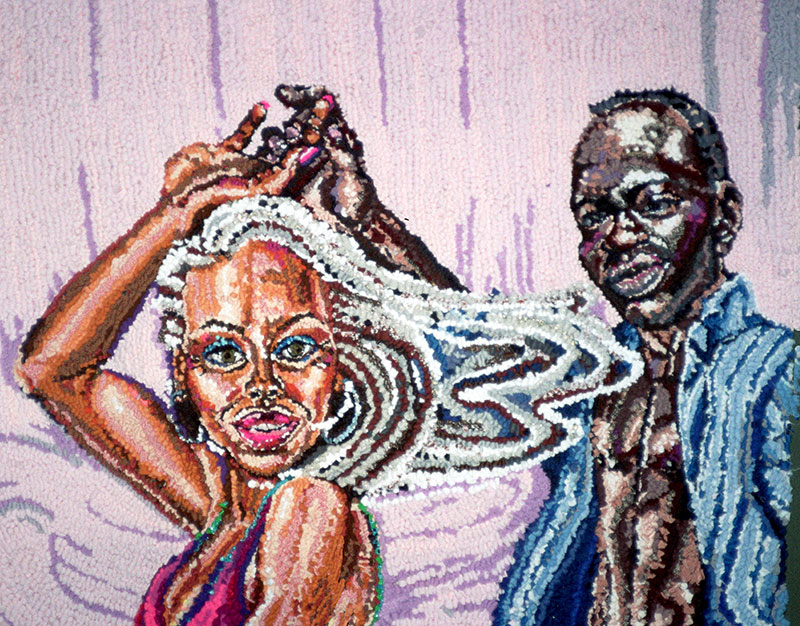Diversity, Rhythm, and Reciprocity on the Salsa Dance Floor

Copyright © Linda Friedman Schmidt, Salsa Cures Sadness No.2: Silver Shines, detail, discarded clothing, 65 x 42 in
Diversity is Celebrated on the Salsa Dance Floor
The salsa dance floor is where people of every race, ethnicity, religion, social class, age, and sexual orientation come together and feel a sense of welcome, belonging, safety, and freedom. It is where dancers white, black, brown, yellow, and every color and culture come together to find refuge and joy, where diversity and multiculturalism come alive. The dancers not only respect one another’s cultures and histories, but also create something new together as they explore a complicated dance that allows for creative expression. They make it their own by combining American, Latin, African, Asian, and European sensibilities.
Diversity, Acceptance, and Connection
There is unconditional love, connection, and pure joy on the salsa dance floor. The diversity of the crowd, the fast music, and the switching of partners with every song enable a connection with people from all over the world in a short period of time. The communication is non-verbal because dance transcends language; it is a universal language. The connection is through the hands (see image); there are elaborate routines of silent communication with fingers telling palms what to make the rest of the body do. There is an emotional connection when you face each other. Dripping sweat doesn’t matter – it’s the connection and the liquid, amazing motion that counts. There is a wonderful sense of physical happiness that comes from using the body to celebrate life. Dancers leave smiling, on a natural high no gym could ever provide.
Diversity Opens Our Minds To New Perspectives
Cultures define and renew themselves through encounter. Simply being exposed to diversity can shift one’s way of thinking and doing. Over the decades, scientists, psychologists, sociologists, economists, and demographers have weighed in, coming to the conclusion that, without a colorful community, we can only see “black and white,” a very simplified view. Socially, when we hear an opposing view from someone who is different than us, it provokes more thought. Diversity expands the mind and more. It helps us to understand the incredible interconnectedness that we all share with one another.
We Have Our Humanity in Common
From an open letter to the next generation of artists by jazz musicians Wayne Shorter and Herbie Hancock: “We need more one-on-one interaction among people of diverse origins with a greater emphasis on art, culture and education. Our differences are what we have in common. We must work to create a world in which people of all backgrounds can exchange ideas, resources, thoughtfulness and kindness. We need to be connecting with one another, learning about one another, and experiencing life with one another. We can never have peace if we cannot understand the pain in each other’s hearts. The more we interact, the more we will come to realize that our humanity transcends all differences.” The ideal world would be like the salsa dance floor, a place where all are welcome, where people of all ages, races and religions come together with joy to celebrate life, where each individual has the opportunity to shine and is free to be himself.
My process is a metaphor for unity and peaceful coexistence. I assemble and join disparate strips of clothing, pieces in all colors, patterns, and textures, to create an integrated, unified, harmonious new whole. I am a weaver of community binding it together. I am peace building through my piece making.
In addition to her work as visual artist, Linda Friedman Schmidt is a salsa on2 dancer with percussive sensibility. The cadence, underlying pulse, and rhythmic quality inherent in Latin dance impart an edge to her artwork which has its own distinct tempos, repetitions, texture, rhythm, and underlying structure.

Comments are closed.